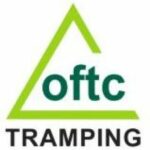Listed below are the items of clothing and equipment which should be worn or carried by each person on a Club tramp.
FOR A DAY TRAMP
- day pack with a waterproof pack liner or plastic bags
- shorts or tramping trousers, preferably quick drying
- sturdy footwear suitable for expected terrain
- gaiters (desirable)
- waterproof raincoat
- over trousers, depending on expected conditions
- fleece, merino or polypropylene clothing – beanie or balaclava, mittens or gloves, jersey or fleece jacket, thermal vest and long johns, depending on conditions likely to be encountered
- shirt or T-shirt, preferably breathable fabric
- first aid kit
- cold drink, hot optional
- lunch and snacks
- whistle, headlight (desirable)
- matches or lighter
- toilet paper (in plastic bag)
- sunhat, sun block
- sun glasses or snow glasses (UV protecting)
- compass and map (desirable)
- survival blanket or bivvy sack
- insect repellent (depending on area and season)
- FMC Booklet –Safety in the Mountains (optional)
- GPS or GPS able Smartphone (desirable)
- dry clothes and shoes for the journey home and a boot bag for wet, muddy boots
- Member Information Card
- Medical Emergency Form (if appropriate)
For the more challenging day tramps, consider the possibility of having to overnight in the event of an accident or incident, and adjust your gear accordingly
FOR A BACKPACKING TRAMP
- pack/waterproof pack liner
- sleeping bag and sleeping mat
- bivvy sack, emergency shelter or survival blanket
- sturdy footwear suitable for expected conditions
- shorts or tramping trousers, preferably quick drying
- gaiters (desirable)
- waterproof raincoat
- over trousers when required for expected conditions.
- fleece, merino or polypropylene clothing – beanie or balaclava, mittens or gloves, bush shirt, jersey or fleece jacket, thermal vest, long johns and spare socks
- change of clothes to wear in the huts
- sunhat, sun glasses or snow glasses (UV protection)
- light shoes or sandals for hut wear
- plate or bowl and mug, knife and spoon
- matches or lighter and firelighters in waterproof container
- lightweight billy with holder
- cooker with adequate fuel for a contingency day
- toilet paper in plastic bag
- toilet gear and optional small towel
- first aid kit
- torch and spare batteries
- paper and pencil in waterproof bag
- whistle
- water bottle
- insect repellent (depending on area and season)
- food for breakfasts, lunches, dinners, plus one extra day
- snacks, plus enough for one extra day
- sunblock
- FMC booklet –Safety in the Mountains (optional)
- compass and map (and watch if not carrying a Smartphone)
- GPS or GPS capable Smartphone and spare battery source (desirable)
- Member Information Card
- Medical Emergency Form (if appropriate)
Tips
- Because weather can deteriorate rapidly, the importance of wearing fleece, merino or polypropylene clothing cannot be overemphasised.
- Do not wear cotton clothing such as jeans or cords.
- Pack gear in plastic bags or drybags inside a waterproof pack liner.
- A pack cover may be useful, especially when tenting.
- Eliminate unnecessary weight – if in doubt, ask the leader. Aim for approximately 15kg maximum weight.
